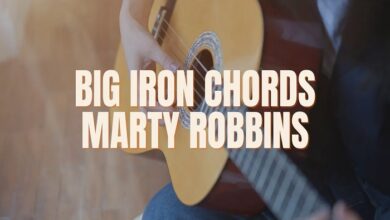How to Get Rhythm Chords

Rhythm chords are chords that are played in a rhythmic pattern, usually with a strumming or picking technique. Rhythm chords are often used to accompany a melody or a singer, and they can create different moods and styles depending on the chord progression, the tempo, and the strumming pattern. In this article, we will learn how to get rhythm chords for any song or genre.
What are Rhythm Chords?
Rhythm chords are simply chords that are played in a rhythmic way. A chord is a combination of three or more notes that sound harmonious when played together. There are many types of chords, such as major, minor, seventh, diminished, augmented, and so on. Each chord has a different sound and function in music.
A rhythmic pattern is a sequence of beats or pulses that create a groove or a feel. A rhythmic pattern can be simple or complex, depending on the number of beats, the accents, the syncopation, and the subdivision. A rhythmic pattern can be played with different techniques, such as strumming, picking, fingerstyle, or tapping.
To get rhythm chords, you need to combine a chord and a rhythmic pattern. For example, you can play a C major chord with a simple down-up-down-up strumming pattern. Or you can play an A minor chord with a more complex picking pattern that involves alternating between the bass note and the higher strings.
How to Choose Rhythm Chords for a Song?
There are many factors that can influence your choice of rhythm chords for a song. Some of them are:
- The key of the song: The key of the song is the main scale or tonality that the song is based on. The key of the song determines which chords are more likely to sound good together. For example, if the song is in the key of G major, you can use chords from the G major scale, such as G, C, D, Em, Am, Bm, and F#dim.
- The melody of the song: The melody of the song is the main tune or theme that the song is built around. The melody of the song can give you clues about which chords to use to harmonize it. For example, if the melody notes are G, B, D, and E, you can use a G major chord to match them.
- The genre or style of the song: The genre or style of the song is the category or classification that the song belongs to. The genre or style of the song can influence your choice of rhythm chords in terms of the chord types, the chord progressions, and the strumming patterns. For example, if the song is a blues song, you can use dominant seventh chords (such as G7, C7, D7) and a 12-bar blues progression (such as G7-C7-G7-G7-C7-C7-G7-G7-D7-C7-G7-D7).
- The mood or emotion of the song: The mood or emotion of the song is the feeling or atmosphere that the song conveys. The mood or emotion of the song can affect your choice of rhythm chords in terms of the chord quality, the chord voicing, and the tempo. For example, if the song is a sad song, you can use minor chords (such as Am, Dm, Em) and play them with a low voicing (close to the nut) and a slow tempo.
How to Practice Rhythm Chords?
To practice rhythm chords, you need to develop your chord knowledge, your rhythmic skills, and your musical ear. Here are some tips on how to practice rhythm chords:
- Learn different types of chords and how to play them on different positions on the fretboard. You can use chord charts, diagrams, or online tools to help you learn new chords.
- Learn common chord progressions and how they work in different keys and genres. You can use songs that you like as examples or reference materials to learn from.
- Learn different strumming patterns and how to apply them to different chords and tempos. You can use a metronome or a drum machine to help you keep time and practice your rhythm.
- Learn different picking patterns and how to vary them according to the chord shape and tone. You can use exercises or drills to improve your finger coordination and accuracy.
- Learn how to listen to songs and identify their rhythm chords by ear. You can use online tools or apps to help you slow down or loop songs and analyze their chord structure and rhythm.
Conclusion
Rhythm chords are an essential part of playing guitar and creating music. They can add richness and variety to your sound and express different moods and styles. To get rhythm chords for any song or genre, you need to know how to choose them based on the key, the melody, the genre, and the mood of the song. You also need to practice them regularly and develop your chord knowledge, your rhythmic skills, and your musical ear. With rhythm chords, you can play along with any song or create your own songs with ease and confidence.







